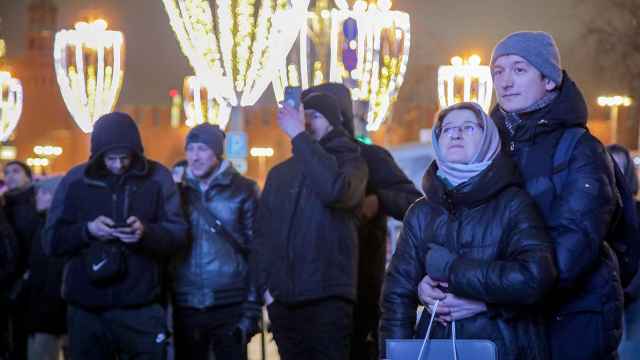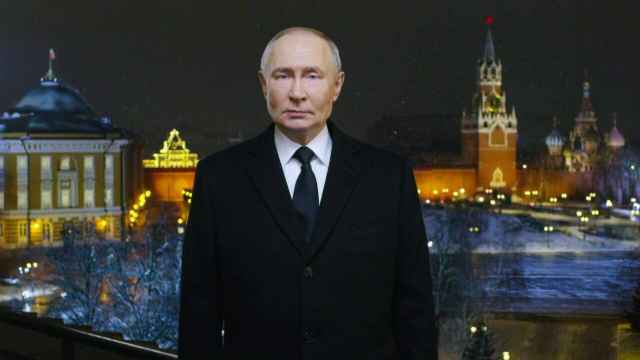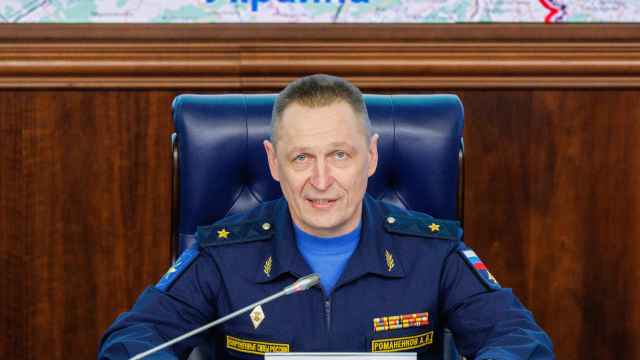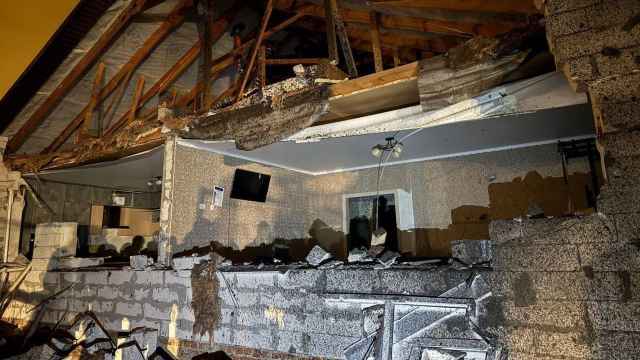PARIS — The hilltop crash of a Sukhoi Superjet ferrying journalists and dignitaries on a mission to drum up foreign sales in Indonesia potentially casts a shadow over Kremlin efforts to restore Russia's once-mighty aerospace industry.
Analysts can't yet say how far the loss of the first new passenger jet since the Soviet collapse will damage the rebirth of Russian aviation, but agree it deals a psychological blow at a time when domestic air safety is also under scrutiny.
The aircraft was on a promotional tour to showcase Russia's arrival as a peer to regional jet makers like Brazil's Embraer or Canada's Bombardier, with Russia especially anxious to shake off the poor safety reputation of its earlier Soviet domestic fleet.
With so much national pride invested in Russia's relatively young aircraft project, the crash is likely to shake the confidence of the industry in a way that would be less common among Western firms whose accident rate is statistically lower.
That could change if investigators find no technical fault.
"If it was pilot error, then it is not a huge blow to the Russian aerospace industry. However, if it was a technical problem with the aircraft, then it could really affect customer perception of the aircraft and order capability," said Tom Chruszcz, a director at the ratings agency Fitch.
President Vladimir Putin, who completed a job swap with former President Dmitry Medvedev to start a new six-year term last Monday, championed the development of the Superjet regional airplane during a previous stint as president.
Analysts say Putin wants to revive the aerospace sector to demonstrate Moscow's industrial clout abroad and help project the Kremlin's authority to voters.
Built by the former Soviet Union's largest warplane maker, the Superjet is a 78- to 98-seat regional airliner designed for sale on a global market, which has historically shied away from Russian-built jets for safety reasons.
Russia has declared ambitions to sell $250 billion worth of aircraft by 2025 and overtake even Soviet-era output records to compete with U.S. and European giants.
Sukhoi's sister company Irkut — both are part of a giant state aircraft holding company forged by Putin and known as United Aviation Corporation — has matched China in developing a 150-seat airliner called MS-21 to rival Airbus and Boeing jets.
Wednesday's disappearance of a Superjet from Indonesian radars during a demonstration flight near a volcano coincided with a Victory Day military parade on Red Square, where Putin promised to promote Russia on the world stage.
"If this is a catastrophe, then, of course, it's bad for Russia's image in the world, given also that last year was unlucky in terms of air safety," said Boris Rybak, director of Infomost, a Moscow think tank, speaking before rescuers located the wreckage.
No industrial effort better symbolizes Moscow's push to restore national pride than Sukhoi's Superjet and its factory, which was inaugurated in 2007.
The far eastern city of Komsomolsk-on-Amur was once sealed off from the outside world as a nerve center of Soviet submarine and fighter production.
But its economy collapsed when orders and government cash dried up at the end of the Cold War and Sukhoi fighter engineers resorted to making children's bicycles, local guides say.
The Superjet restored jobs and commercial prospects to an abandoned corner of the plant as a jet designed for Westerners slowly took shape beneath peeling Soviet frescoes — meters from the continued trickle of Sukhoi Su-27 combat jet production.
Its long-deserted civil airport terminal, a museum of mosaics and vintage weighing machines, was re-opened to allow investors and foreign media to witness the Superjet's rollout.
"The Superjet is more than a plane; it is a priority project," then-First Deputy Prime Minister Sergei Ivanov told assembly workers at the Superjet's rollout ceremony in 2007.
Its future now lies in the hands of crash investigators. Moscow hopes the crash does not harm its aeronautics sector.
A senior Russian official has suggested the crash was caused by pilot error rather than a technical failure, but most safety analysts cautioned that it was too early to say what caused the disaster.
The circumstances and potential loss of prestige echo the notorious crash of the Soviet Union's monster eight-engined Tupolev, named Maxim Gorky, during a demonstration flight in 1935. The crash almost 77 years ago to the day was blamed on the pilot, but the exact circumstances have never been fully established.
The reputations of several Western companies are also tied up in the Superjet's future.
Boeing acted as a consultant on the project, including for flight and maintenance crew training. But its role is mainly seen as a symbolic one, with the U.S. group keen to tap into Russian titanium supplies for its next generation of jetliners.
French and Italian firms, however, invested heavily, and this has been a key selling point in Sukhoi's marketing efforts.
Alenia Aeronautica, a unit of Italy's Finmeccanica, bought 25 percent of Sukhoi's civil division to back the project. It is responsible for the global marketing and after-sales support that are both crucial for winning contracts.
"The Russian aerospace industry collapsed after the Cold War, and the Russians aim to work their way back to commercial market acceptance by working with Western suppliers to improve standards, manufacturing procedures and product support," said analyst Richard Aboulafia of Virginia-based Teal Group.
"This crash doesn't mean they can't do it, but it is certainly a setback, and it will depend what is found in the investigation. There is a lot we don't know yet," he added.
Sukhoi has expressed hopes that the development dollars and technology of Western suppliers would attract Western airlines that may otherwise be reticent about buying Russian. It is also undercutting rivals with a price of some $30 million per plane.
So far it has found buyers for 170 aircraft out of 1,000 it would like to sell, but no mainstream Western airlines. Irish budget carrier Ryanair has expressed tentative interest.
A Message from The Moscow Times:
Dear readers,
We are facing unprecedented challenges. Russia's Prosecutor General's Office has designated The Moscow Times as an "undesirable" organization, criminalizing our work and putting our staff at risk of prosecution. This follows our earlier unjust labeling as a "foreign agent."
These actions are direct attempts to silence independent journalism in Russia. The authorities claim our work "discredits the decisions of the Russian leadership." We see things differently: we strive to provide accurate, unbiased reporting on Russia.
We, the journalists of The Moscow Times, refuse to be silenced. But to continue our work, we need your help.
Your support, no matter how small, makes a world of difference. If you can, please support us monthly starting from just $2. It's quick to set up, and every contribution makes a significant impact.
By supporting The Moscow Times, you're defending open, independent journalism in the face of repression. Thank you for standing with us.
Remind me later.





